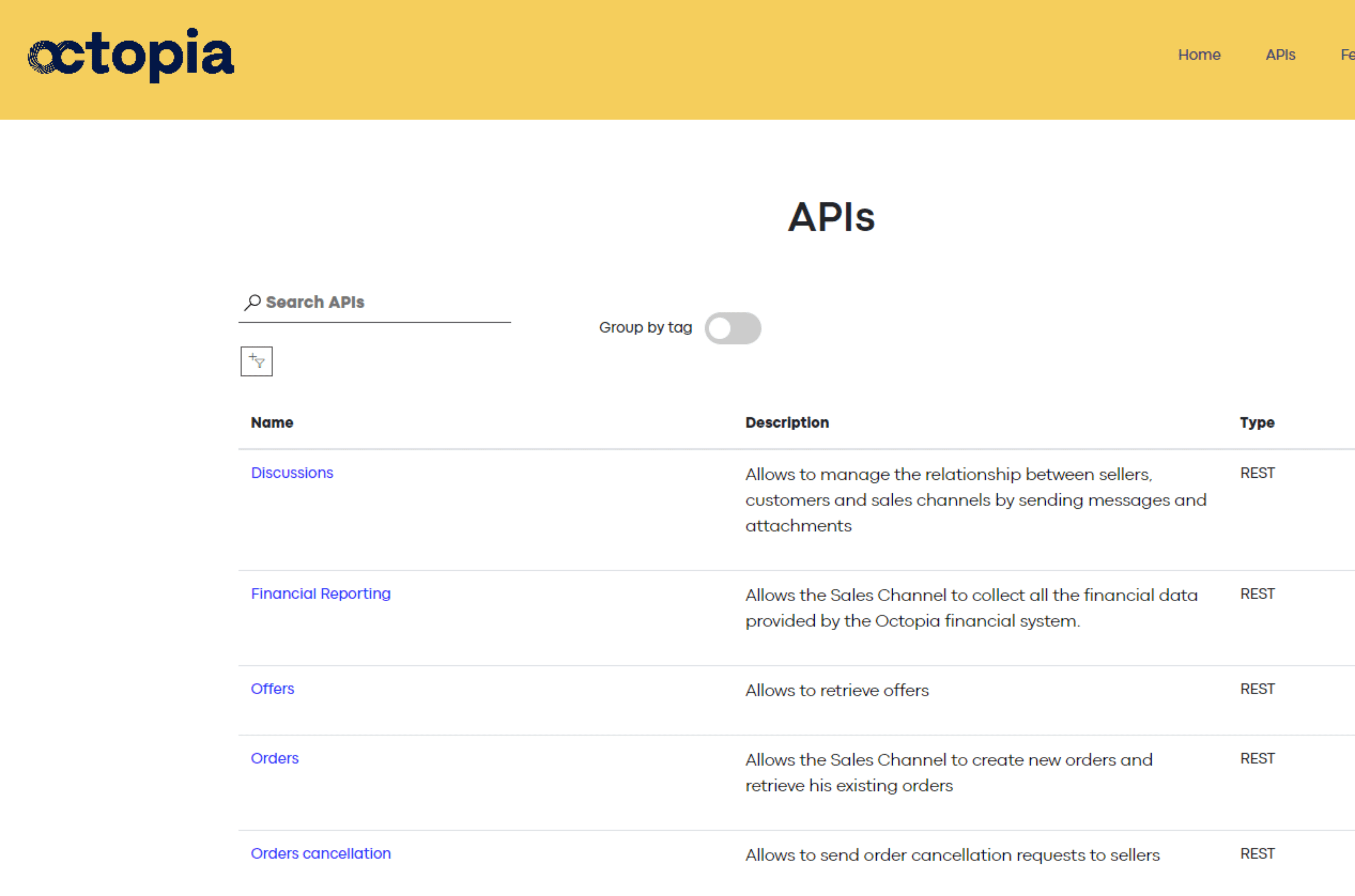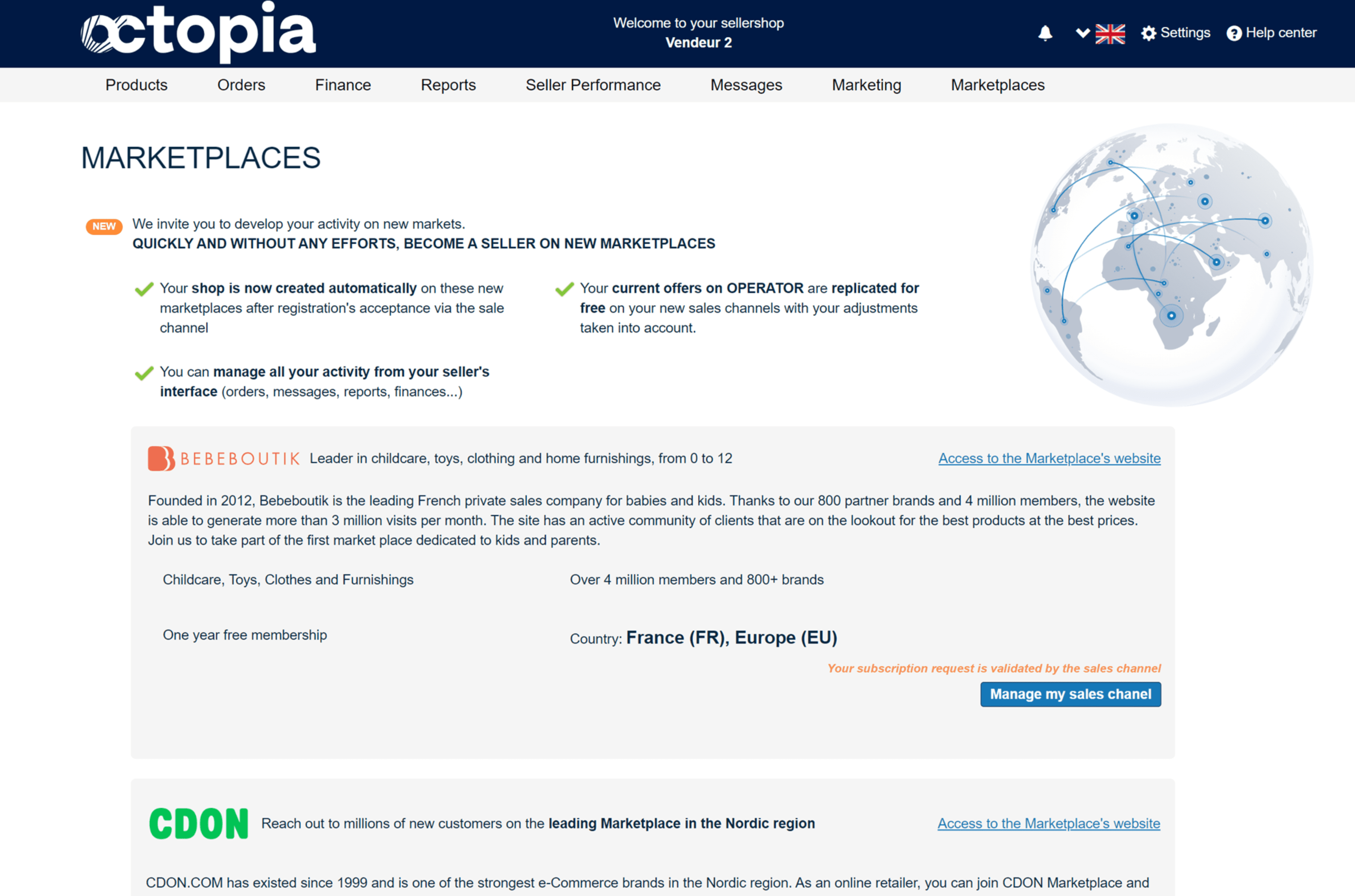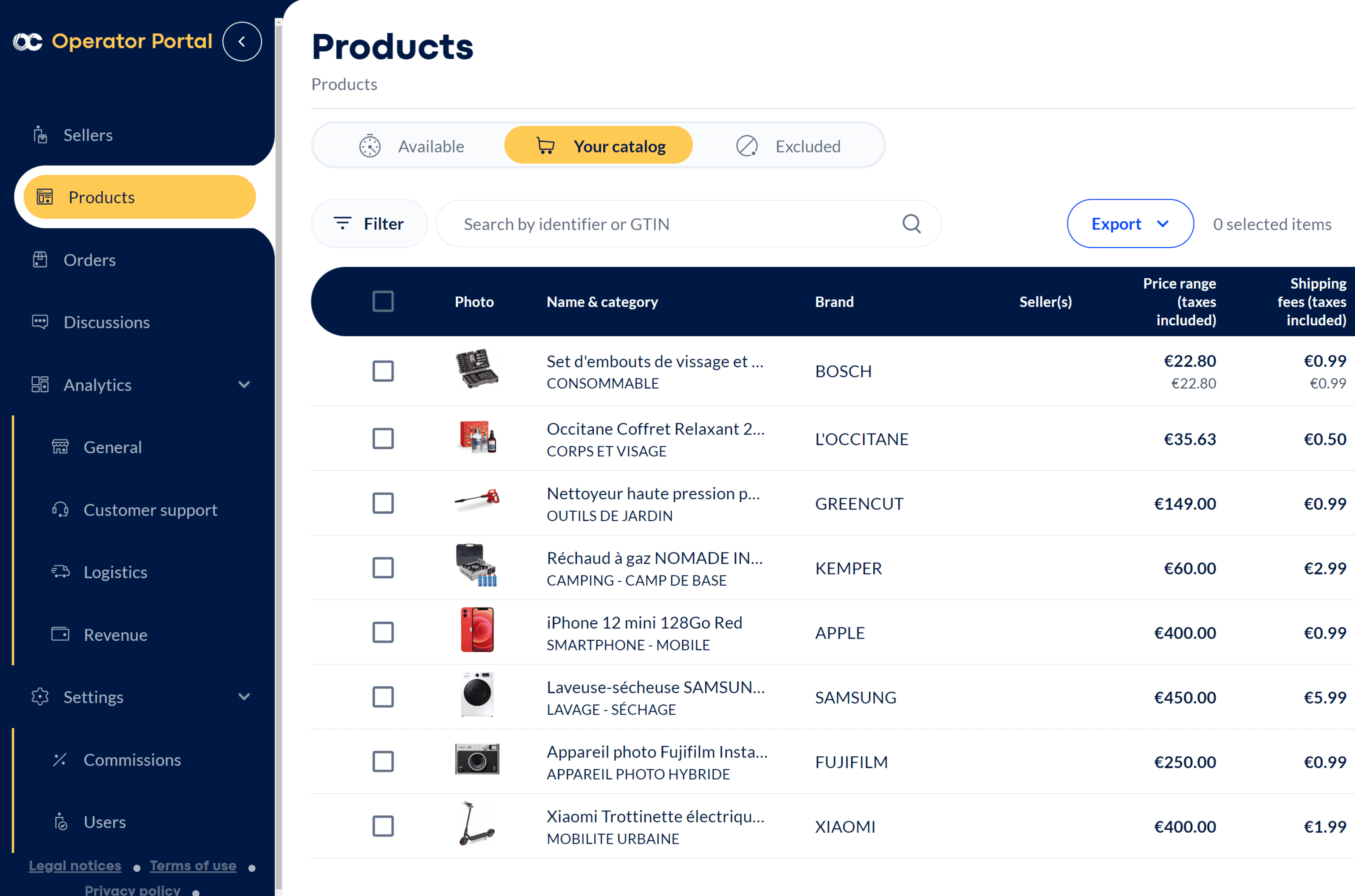Create your marketplace
Turn your e-commerce website into a marketplace and boost your business. We’re with you every step of the way, supporting you with technology, your business plan, integration, sellers, products, payment, logistics, etc.
Why launch your own marketplace ?
Become a reference in your market
By launching your marketplace, you become the “one stop shop” for your customers. You foster customer loyalty by giving them access to a wide range of products and brands at competitive prices.
Access new markets
With a marketplace, you can expand into new product categories effortlessly, and improve your sales by attracting new customers.
Outsource complexity
By becoming an intermediary between sellers and customers, you can meet your market’s expectations in terms of products without having to manage the product ranges, shipments and returns, all of which are handled by the sellers.
Operate on a robust and secure API-first platform
Access high-performance technology with API-first development for easy integration. Thanks to its scalability, our SaaS solution can handle 3,000 requests per second on the API for orders, 300 requests per second on the operator page, and over 400 requests per second on the seller page.
It has been natively designed to generate business, and has everything you need to create, develop and manage your marketplace with ease. Our user-friendly interfaces make it easy to manage all your activities: define your range of sellers, select your products, monitor your orders, set and adjust your commissions, handle messaging and reporting.

Access a community of 15,000 international sellers
Offering products from qualified sellers is one of the key success factors for your marketplace. Our experts will work with you to select the best sellers according to your brand strategy and criteria.
You can select sellers directly from your Octopia account. Thanks to our “one-click onboarding” technology, sellers connect to your marketplace in just one click, and you can accept or reject them directly from your interface: all recruitment procedures (“Know your Customer”, taxonomy, integration, etc.) have already been taken care of. Integrate your sellers quickly and have your marketplace hit the ground running.

Broaden your range with a rich catalogue of over 80 million top brand references
Thanks to our ecosystem of thousands of sellers, you benefit from a catalogue of 80 million products from leading brands, mapped and selected. Our expertise enables us to address all types of categories and integrate more than 1.5 million products per week to continually and effortlessly broaden your range.

Automatically connect your e-commerce shop by using our connector
Octopia in key figures
They trust us
Why choose Octopia ?
Running a marketplace is a new activity that has an impact on the organisation and its business model. With 11 years’ experience in managing marketplaces, our teams can advise you at every stage of your project and share their expertise to make your new marketplace business a profitable investment.






